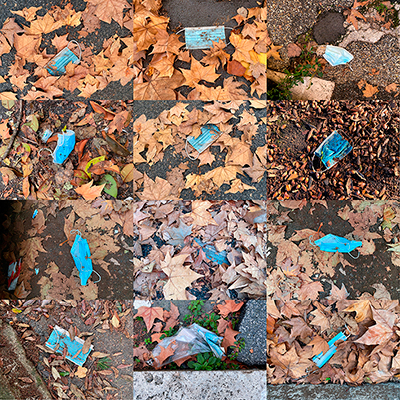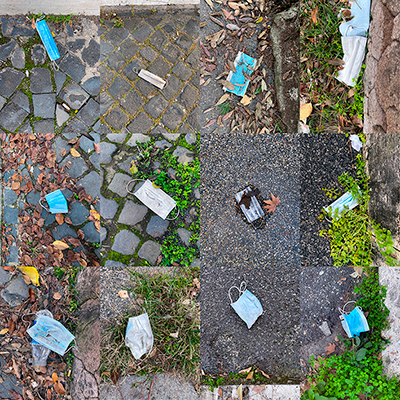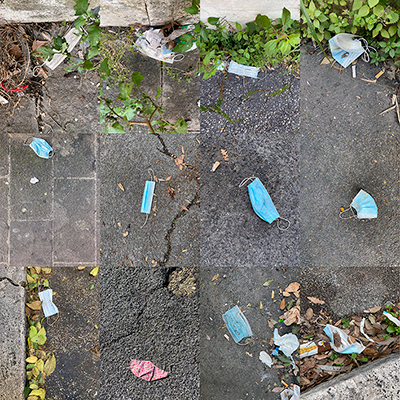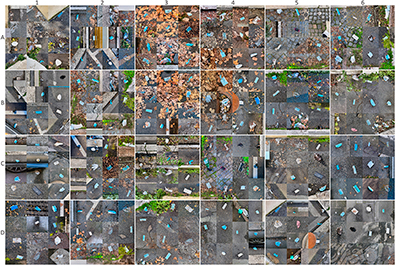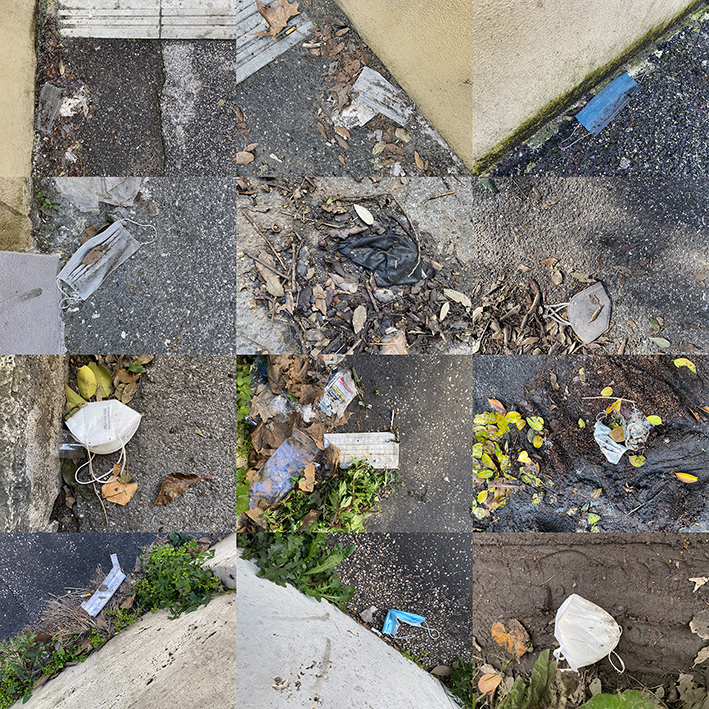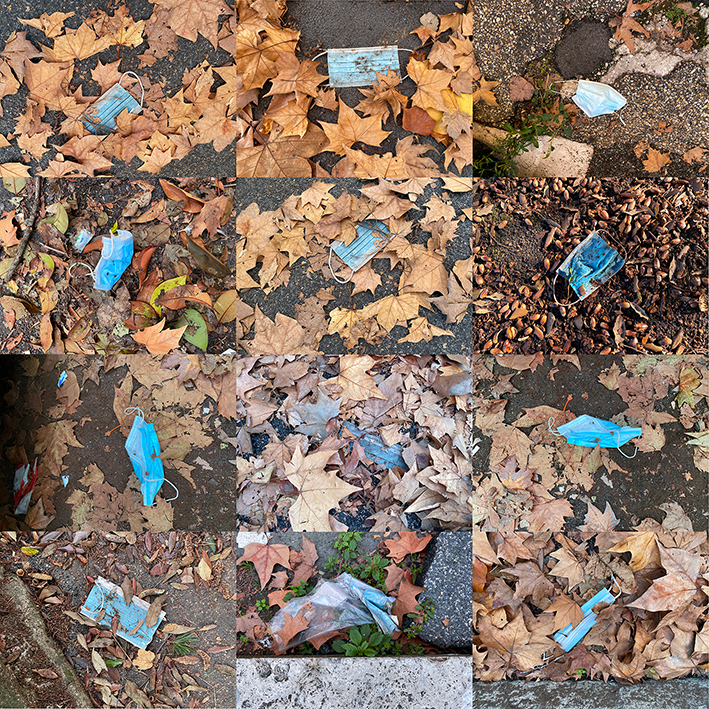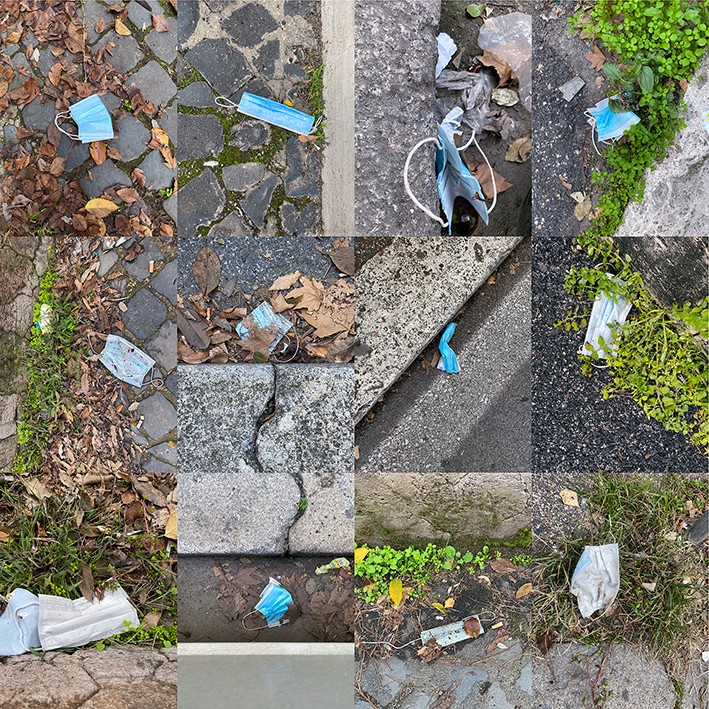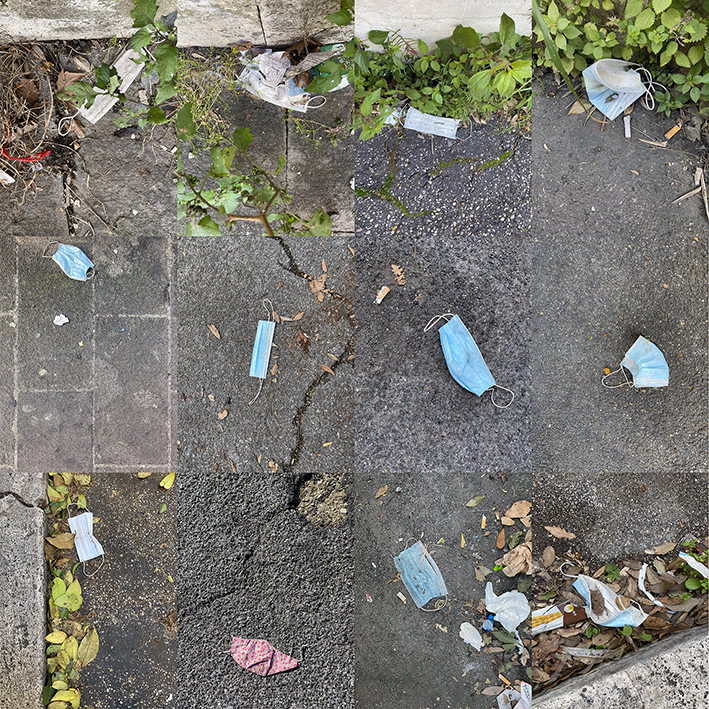Ti Ri_Conosco Mascherina!
Qui a Roma, all'inizio, non si trovavano. Ricordo che si autoproducevano con carta da forno inserita dentro tasche di cotone sostenute dalle orecchie con elastici artigianali. Oggi sono ovunque: nelle mercerie, nelle tabaccherie, nei piccoli bazar cinesi.
Secondo stime ISPRA (Ist. Sup. Protezione e Ricerca Ambiente) in Italia il fabbisogno di mascherine è di 40 milioni al giorno. Ciascuna pesa circa 11 gr. si arriva a 440 tonnellate di rifiuti al giorno. Così, dall'inizio della Fase 2, si stimano 160.160 tonnellate di rifiuti di mascherine. Se solo l'1% di queste venisse buttato per terra, ipotesi ragionevole, in un anno 1.601,6 tonnellate di rifiuti di mascherine rimarrebbero per terra. Si è stimato, poi, che a livello globale ogni giorno si usano 3 miliardi di mascherine.
Dal settembre 2020 ho cominciato a fotografarle con il mio cellulare. Una mia amica un giorno mi dice: «Sembra che tu vada per funghi!» È molto più difficile trovare funghi nel bosco: le chirurgiche, bianche, nere, azzurre, sono facilissime da trovare.
Questo progetto mostra mascherine buttate per strada e fotografate dall'alto: una distanza che ci porta a pensare che tutto ciò non ci riguarda.
Il progetto è flessibile:-
— si espone appeso, per un totale di 24 mq, ogni «scheda» può essere stampata 1 x 1 mt, ma il progetto è in continua evoluzione perché ogni giorno torno a casa con qualche nuova fotografia;
— si costruisce il gioco «Ti Ri_Conosco Mascherina!»: 24 schede, ogni scheda ha 12 fotografie; in totale i giocatori devono vedere 288 fotografie di mascherine buttate per terra. Il gioco è formato da un tabellone 60 x 40cm, 24 schede 10 x 10 cm e una clessidra; ogni giocatore deve riconoscere la scheda sul tabellone numerandola a voce alta. Vince chi riconosce il maggior numero di schede nel minor tempo.
Chi vorrà giocare con me?
Patrizia Bonanzinga
Roma, 10 marzo 2021
Identify the Mask!
At the beginning, here in Rome, it was impossible to find them. I remember we used to make them using baking paper folded inside cotton pockets with elastics going around our ears.
Today, they are everywhere: at the haberdashery, at the tobacco shop, at the small Chinese convenience store.
In Italy, according to ISPRA (the Environmental Protection and Research Agency) the daily need for masks is estimated to be at 40 million. Each mask weigh approximately 11 gr., adding up to 440 tons of waste per day. Thus, since the beginning of Phase 2, an estimated 160,160 tons of mask were disposed. Supposing that 1% of these were littered, which is reasonable assumption, only in Italy in a year, 1,601.6 tons of masks waste would remain on the ground. At the global level, it is estimated that 3 billion masks are used daily.
Since September 2020, I started to photograph them with my cell phone. One day, a friend of mine told to me “You look like you're picking mushrooms!” Truth is, it is way harder to pick mushrooms in the woods: the surgical ones, white, black, blue, are very easy to find.
This project shows masks littered and photographed top-down: a distance that leads us to think that all of this does not concern us.
The project is flexible:
— the pictures can either be hung, for a total of 24 sq. meters, with every “card” printed 1 x 1 mt.
— or it could be a game, to be called “Identify the Mask!”: the game consists of a 60 x 40 cm board displaying 24, 10 x 10 cm, cards each including 12 photographs, and an hourglass. The players therefore face 288 photographs of masks on the ground. The goal is to collect the most pairs on the board by mentioning their respective numbers aloud. Whoever recognizes the highest number of masks in the shortest time, wins.
Who wants to play with me?
Patrizia Bonanzinga
Rome, March 10th, 2021






